The blue kitchen is the cherished dream of clean housewives. This is the color moral purity and the guarantee of a slim figure. Its various shades can create unusually strong visual effects from the transparent purity of mountain air to mysterious mysticism. What color combinations of blue are appropriate in the kitchen? What colors should you mix to get blue and its shades? We will try to answer these questions.
How to get blue?
Pure blue is a base color that cannot be created by mixing. However, with the addition of yellow, red, white and black, it takes on a new look, transforms and crumbles in a thousand shades.
What shades of noble blue can you get?
When blue and red are mixed, purple is formed. By varying the proportions, you can get shades from blue of varying purity to purple and lilac. Adding white creates pastel hues, while a drop of black creates rich earthy tones.
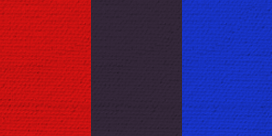
Blue combined with yellow in equal proportions gives green. The predominance of blue will give a shade of aqua, and yellow tends to bring the color of the walls closer to salad.
![]()
Eye-pleasing ultramarine is obtained by mixing magenta and cyan.

Blue kitchen - possible color combinations
So, the first thing we do is create the main idea. Will it be a sea breeze, a bouquet of forget-me-nots or sweeping clouds against the blue sky?
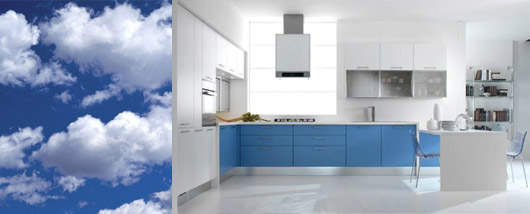

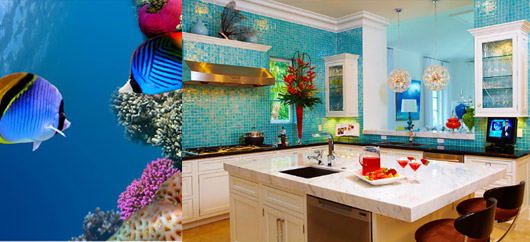
Blue waxy bloom of plums with purple skin and orange pulp will remind winter evening summer scents.
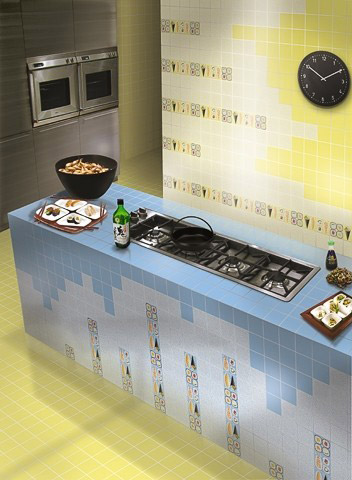
Sea wave coexists with sandy shades of the beach and noble woody notes of the yacht deck. The coral reef splashes luscious splashes of red, orange, yellow and purple. However, such brightness is appropriate only for accents diluted with neutral calm shades.
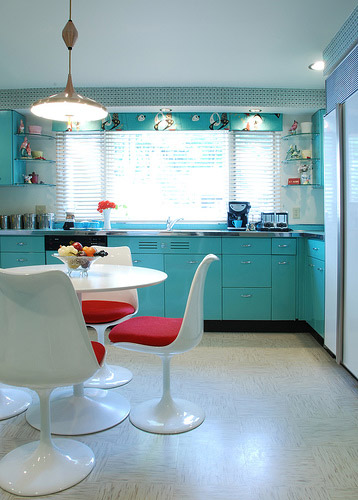
At the same time, it is desirable to be able to quickly remove red and orange accessories, replace them with calmer tones to create a calm and balanced atmosphere.
In any location of the room, it is advisable to take care of abundant lighting. In this case, it is better to select yellow light bulbs. Various accessories in a warm range will help you avoid the feeling of cold. Wood will definitely help "warm" the interior regardless of the main color.
Photo printing on wallpaper or facades allows you to blur the real boundaries of a room, taking your gaze deeper into perspective.
It is important to remember that the darker the chosen base shade, the less it should be. Otherwise, the interior will be gloomy. Light tones, diluted to pastel shades, can fill a room with almost no limit.

White, gray, silver remarkably dilute the richness of saturated shades. They are good for filling large areas in blue interiors.
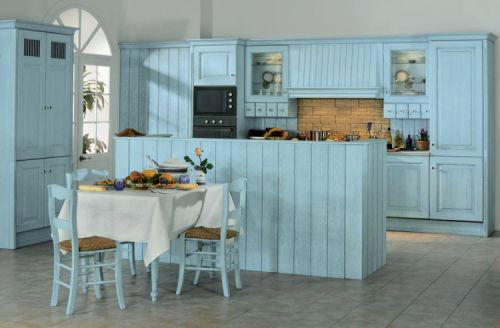
It is undesirable to choose a blue kitchen for families where children have problems with appetite. In any case, you need to take care that the meal takes place at a table covered with a tablecloth with a cheerful, appetizing print. But for those who want to find a slender figure, the blue interior will help in the fight against excessive appetite and return the desired elegance.
Mar 17, 2015 Werri
1
Decide on the desired paint color. It is better to find a sample, and then proceed directly to mixing. A sample could be a piece of fabric or a cut-out illustration from a magazine. It is important that the sample is three-dimensional, as the same color can look different in large and small areas. During work, one should constantly compare what is obtained on the palette with a sample.
2
Remember that there are only three basic colors: red, yellow and blue. The rest of the colors are derived. They are obtained by mixing primary colors with the addition of white and black. The warm color scheme is based on mixing yellow and red colors. By adding white to red, you can get a bright pink tint, and thanks to the combinations of red with yellow and black, brown tones. If you need a cooler shade, just add a little blue.
3
In order to darken the color and get rid of excessive brightness, use black paint. It requires careful handling. When mixing paint in the palette, just touch the black paint with the tip of a dry brush. Pure black does not exist in nature, so before mixing, you should apply a little paint on a white background. If the resulting black color is dark blue, brown or purple, it is better not to use paint.
4
White color added for delicate light shades. It is necessary to create pastel colors: light pink, beige, pistachio shades. When using a large amount of white paint, rich colors cannot be achieved.
Instruction 2
1
To get any color by mixing, you need to have three main colors: red, yellow and blue. These three colors are used when refilling inkjet cartridges. Interestingly, these colors cannot be obtained by mixing any others.
2
Use the following color combinations to get the colors and shades you want:
red and yellow - orange;
yellow and blue - green;
red and blue - lilac;
red and green - brown;
brown and green - olive;
brown and orange - terracotta;
blue and green - turquoise;
red, green and blue are black;
brown and yellow - ocher;
red and lilac - pink.
3
To get the different shades of the colors above, you need to mix the paints in different proportions:
If you add red, black and a little green to the yellow, you get a mustard color.
If you add a little brown and black to the yellow, you get the color of an avocado.
If you add a little red to yellow, you get gold.
If you add yellow to green, you get an olive color.
How to get blue
Painting knows many ways to get the desired color. One or another paint can be applied in its pure form without mixing. The desired color can also be obtained by mixing two or more colors.
Did this article help you?
Instructions
1
When mechanically mixing paints, a palette is usually used, after which the result is transferred to the canvas. Sometimes paints are mixed to obtain the desired color directly on a sheet of paper.
2
Agitated paints can change hue and saturation. A burgundy color, for example, can be obtained by mixing black paint and cinnabar. Chemical interactions when mixing paints, however, can change the color spectrum, causing it to darken.
3
You need to know that blue paint, as well as yellow and red, cannot be obtained by mixing other colors. The fact is that blue refers to the so-called primary colors, from which, if desired, you can get millions of other shades. But, again, it is impossible to get blue from paints of other colors.
4
But the shades in all their infinite variety can be obtained by mixing any two colors. In this case, the mutual ratio of the amount of each of the paints used in mixing will matter. So, equal amounts of blue and yellow artistic colors will end up with green.
5
If you now mix a certain amount of yellow paint with the artificially obtained green color, then you will see gradually turning into yellow green shades. Revert to original blue you can gradually add blue paint to the green paint.
6
Remember that the more the colors are closer to complementary, the less saturated color will be mixed. In other words, the colors will become close to gray.
7
To create vivid and memorable images, the artist should strive to use the minimum number of colors while maintaining the impression of completeness of the color gamut. Artistic knowledge and skills improve with the accumulation of experience with paint.










